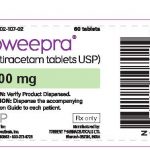
Contents
Benefits and Risks of Assisted Ventilation of Newborns
Assisting newborns with ventilation involves using a mechanical ventilator to deliver oxygen to their lungs, helping them breathe when they’re unable to do so on their own. While this procedure can kickstart their breathing reflex and address respiratory issues, it also carries the risk of lung trauma.
When a newborn is unable to breathe spontaneously at birth or experiences difficulty breathing, assisted ventilation can provide the necessary support. A mechanical ventilator delivers oxygen to their lungs at the required pressure and frequency until their respiratory system functions normally.
The respiratory process involves the precise functioning of respiratory muscles and the exchange of oxygen for carbon dioxide in the lungs. This activity is regulated by the brain. The lungs consist of small air sacs called alveoli, which supply oxygen to the blood and remove carbon dioxide through exhalation.
Types of Assisted Ventilation for Newborns
Various approaches are employed in assisted ventilation depending on the cause of the infant’s respiratory distress or failure. These approaches include:
Continuous Positive Airway Pressure (CPAP)
CPAP devices maintain a stable flow of air with constant pressure during inhalation and exhalation. They are used through nasal prongs or a mask covering the nose. CPAP is employed for babies who can breathe independently but require respiratory support due to distress. Early and preventive use of CPAP in premature infants can reduce the need for mechanical ventilation. CPAP can also be utilized to transition a baby off mechanical ventilation. Nasal Intermittent Positive Pressure Ventilation (NIPPV) is another form of positive airway pressure that can be programmed to provide continuous breaths or align with the baby’s own breathing.
Conventional Frequency Ventilation
Conventional frequency ventilation involves inserting a thin tube into the baby’s airway. The ventilator settings can be adjusted to deliver airflow at different pressures and time cycles based on the baby’s needs. Adjustable parameters include:
Peak Inspiratory Pressure (PIP): The highest level of pressure applied to the lungs during inhalation. PIP is determined by lung compliance and chest wall motion.
Positive End-Expiratory Pressure (PEEP): The air pressure that remains in the airway at the end of exhalation, preventing alveoli collapse and maintaining lung volume.
Respiratory Rate: The number of breaths delivered per minute, adjusted according to blood oxygen/carbon dioxide levels.
Inspiratory and Expiratory Times: The duration of inspiration and expiration, aligned with the baby’s time constant. Inspiratory time is gradually reduced to wean the baby off the ventilator.
Inspiratory-Expiratory Ratio (I:E Ratio): The ratio of time for inspiration to expiration. A normal newborn has a ratio of 1:1.5 to 1:2.
Fraction of Inspired Oxygen: The concentration of oxygen in the airflow, adjusted based on the baby’s oxygen saturation.
Flow Rate: The volume of airflow delivered per minute to maintain adequate tidal volume, which represents the amount of air flowing in or out of the lungs in one respiratory cycle.
Strategies in Assisted Ventilation of Newborns
Ventilation strategies are tailored to each baby’s condition and requirements to provide optimal respiratory support while minimizing lung injury.
Pathophysiology-Based Strategies
These strategies adjust ventilator settings based on the specific physiological cause of the baby’s respiratory distress or failure:
- Respiratory Distress Syndrome (RDS): Low lung compliance and functional residual capacity (FRC) are common characteristics of RDS, resulting in low blood oxygen levels (hypoxemia).
- Bronchopulmonary Disease (BPD): Underdeveloped lungs in babies with BPD are more susceptible to injury. The time constant may vary across different lung areas, and airflow resistance may increase.
- Persistent Pulmonary Hypertension: Pulmonary hypertension, or high blood pressure in the lung’s arteries, may occur due to lung underdevelopment or intrauterine hypoxia.
- In addition to appropriate ventilation, surfactant may be administered to prevent alveolar collapse. Lung surfactant is a protein that reduces surface tension at the alveoli’s blood-gas barrier. Medications may also be given to lower blood pressure.
Strategies to Prevent Lung Injury
An infant’s lungs are delicate and prone to injury from mechanical ventilation. Studies suggest that high air volumes at low pressures (volutrauma) can cause lung injury, whereas low volumes and high pressures do not.
Repeated alveoli collapse and inflation due to low end-expiratory pressure can also contribute to lung injury.
Two strategies to prevent lung injury are:
- Permissive Hypercapnia: Allowing a higher level of carbon dioxide in the blood that the baby can tolerate. This approach involves low-volume ventilation to prevent permanent lung injury caused by high-volume ventilation.
- Low Tidal Volume Ventilation: Maintaining low tidal volumes to avoid overdistention of the lungs and preserve functional residual capacity.
Alternative Modes of Ventilation
Technological advancements have led to improved methods of assisted ventilation, including:
- Patient-Triggered Ventilation (PTV): Allowing infants to take spontaneous breaths when able, in contrast to earlier ventilators that deliver time-based airflow at preset frequencies.
- Synchronized Intermittent Mandatory Ventilation (SIMV): Delivering a predetermined number of breaths while also allowing for spontaneous breathing. SIMV detects the baby’s inspiratory efforts and waits for exhalation before delivering the next breath.
- Proportional Assist Ventilation (PAV): Providing ventilation proportional to the volume of spontaneous breaths, which can be adjusted according to the baby’s needs.
- Volume-Targeted Ventilation (VTV): Automatically adjusting flow to maintain preset tidal volumes.
- Tracheal Gas Insufflation (TGS): Used in conjunction with mechanical ventilation, TGS clears carbon dioxide from the respiratory tract by delivering gas into the trachea.
- High-Frequency Ventilation (HFV): Delivering low tidal volumes at a higher respiratory rate than normal breathing. Types of high-frequency ventilation include:
- High-Frequency Jet Ventilation (HFJV)
- High-Frequency Flow Interruption (HFFI)
- High-Frequency Oscillatory Ventilation (HFOV)
Benefits and Risks of Assisted Ventilation of Newborns
Specific ventilation strategies offer benefits but also come with drawbacks:
Use of CPAP or High PEEP
Benefits
- Increased volume and functional residual capacity in the alveoli
- Alveoli expansion
- Stability of alveoli
- Fluid redistribution from the lungs
- Improved ventilation/perfusion matching, facilitating gas exchange
Drawbacks
- Increased risk of alveolar air leaks
- Alveoli overdistention
- Carbon dioxide retention
- Cardiovascular impairment/li>
- Reduced compliance
- Potential increase in pulmonary blood vessel resistance
High-Rate and Low Tidal Volume Ventilation
Benefits
- Reduced risks of:
- Air leaks
- Volutrauma
- Cardiovascular adverse effects
- Pulmonary edema
Drawbacks
- Gas trapping (abnormal air retention in the lungs)
- Alveolar collapse (atelectasis)
- Maldistribution of gas
- Increased resistance
High Inspiratory-to-Expiratory (I:E) Ratio (Long Inspiratory Time)
Benefits
- Improved oxygenation
- Potentially enhanced oxygen delivery to areas with atelectasis
Drawbacks
- Gas trapping
- Increased risks of volutrauma and air leaks
- Impaired venous blood return to the heart
- Increased resistance in the pulmonary blood vessels
Permissive Hypercapnia
Benefits
- Reduced risks of volutrauma and lung injury
- Shorter duration of mechanical ventilation
- Reduced ventilation to the alveoli
- Elimination of low carbon dioxide level side effects (hypocapnia)
- Increased oxygen unloading
Drawbacks
- Cerebral vasodilation (dilation of blood vessels in the brain)
- Hypoxemia (low blood oxygen)
- Hyperkalemia (low potassium)
- Reduced oxygen uptake by hemoglobin
- Increased resistance in the pulmonary blood vessels
Ventilation with Short Inspiratory Time
Benefits
- Faster weaning off ventilation
- Reduced risk of lung collapse (pneumothorax)
- Possible use of higher respiratory rates
Drawbacks
- Inadequate tidal volume
- Potential for high airflow rates


